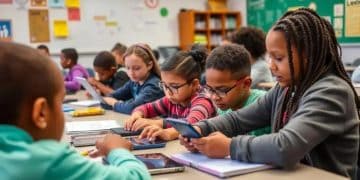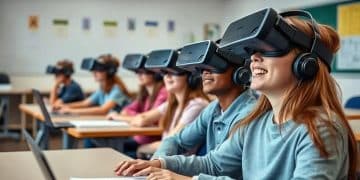School technology integration trends you can’t ignore
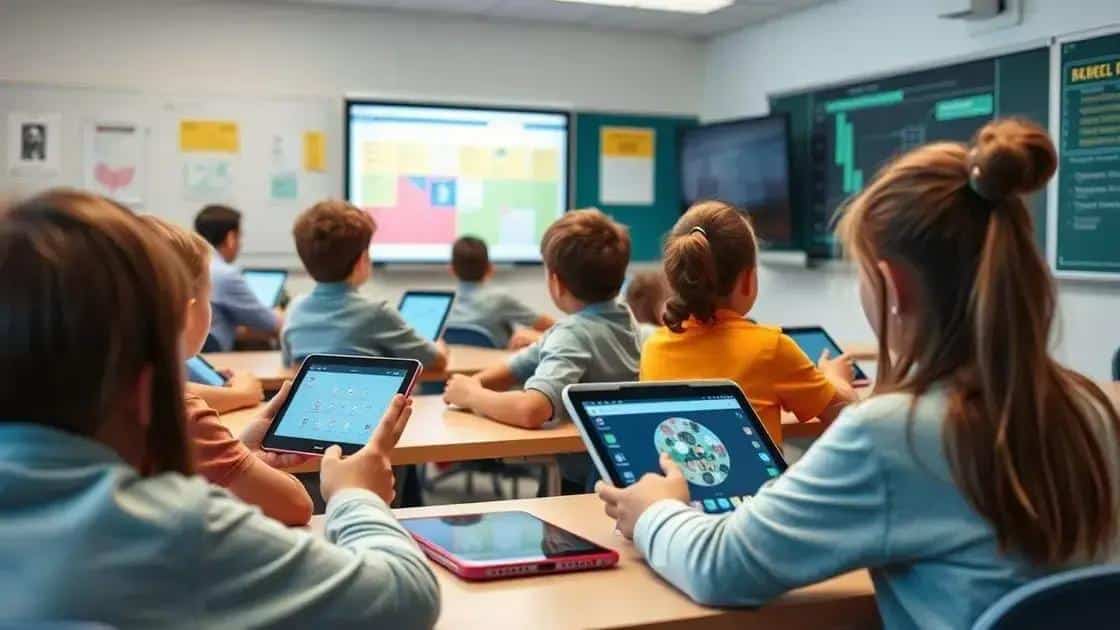
School technology integration trends enhance learning by improving engagement, collaboration, and personalized experiences, while also presenting challenges like budget constraints and the need for proper training.
School technology integration trends are shaping the future of education, offering new and exciting ways for students to engage with learning. Have you noticed how tech is embedded in everyday school activities? Let’s dive into these changes together.
Current technology trends in schools
The landscape of education is rapidly changing with current technology trends in schools. These innovations are reshaping the way teachers instruct and students learn. With tools like interactive whiteboards, tablets, and online resources, classrooms are becoming more dynamic.
Personalized Learning
One major trend is personalized learning. Tailoring lessons to meet individual student needs helps maximize engagement. By using technology, teachers can create customized educational experiences.
- Adaptive learning software
- Data-driven instruction
- Individualized lesson plans
This approach allows students to progress at their own pace, leading to greater academic success. Additionally, many schools are leveraging learning management systems (LMS) to streamline communication between teachers and students.
Collaboration Tools
Another trend is the use of collaboration tools that enhance teamwork in the classroom. Platforms like Google Classroom and Microsoft Teams encourage students to work together on projects, sharing ideas and resources. This fosters a sense of community and helps develop essential social skills.
- Real-time feedback from peers
- Shared digital workspaces
- Group discussions and brainstorming sessions
As technology evolves, it is crucial for schools to keep up with these trends. Engaging students with virtual reality (VR) and augmented reality (AR) experiences is another innovative way to immerse them in learning. These technologies can transport students to historical sites or explore complex scientific concepts in a memorable way. By integrating technology effectively, schools can enhance the learning experience and prepare students for the future.
Benefits of integrating technology in classrooms
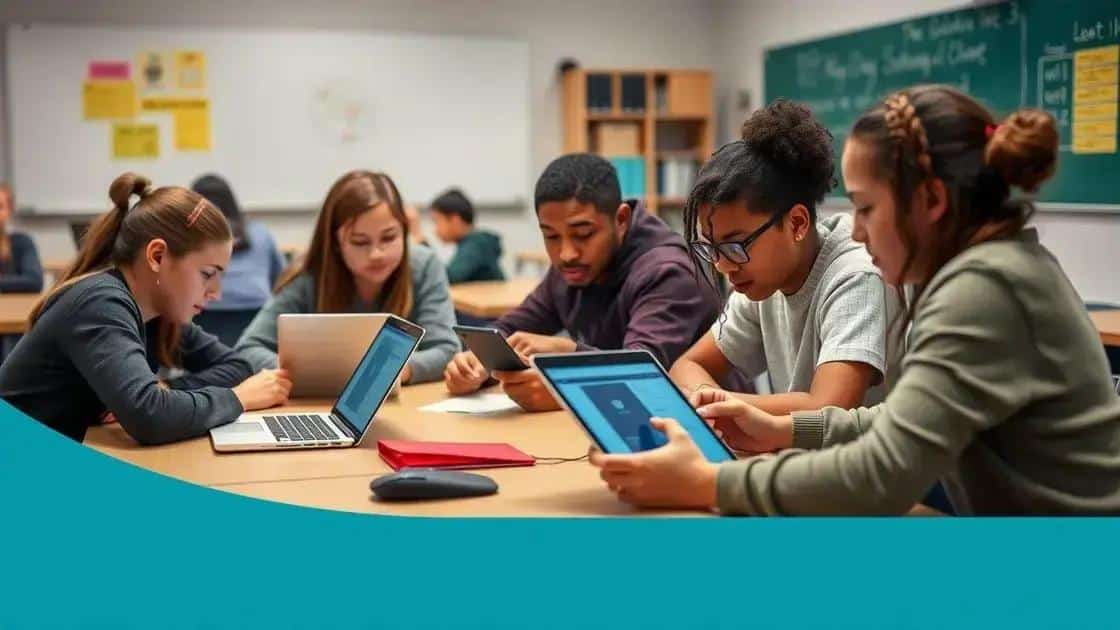
The benefits of integrating technology in classrooms are vast and impactful, transforming how students learn and teachers teach. With the right tools, education becomes more engaging and effective.
Enhanced Engagement
One significant advantage is that technology promotes enhanced engagement. Interactive tools like smart boards and educational apps capture students’ attention better than traditional methods. This increased interest can lead to better retention of information.
- Interactive lessons stimulate interest.
- Gamification makes learning fun.
- Instant feedback motivates students.
As students become more engaged, they take an active role in their learning journey, which fosters a deeper understanding of the material.
Improved Collaboration
Another benefit is the improvement in collaboration among students. Technology allows them to work together on projects seamlessly, regardless of their location. Online platforms facilitate group work, enabling students to share ideas and resources efficiently.
- Shared documents enhance teamwork.
- Virtual classrooms support remote collaboration.
- Discussion forums encourage diverse perspectives.
Collaboration skills are essential in today’s world, and technology helps students develop these in a meaningful way.
Incorporating technology also opens the door to a wealth of resources. Students can access information from around the globe in an instant, broadening their horizons. They can utilize research tools, online libraries, and databases that enhance their knowledge and critical thinking skills.
Personalized Learning Experiences
Additionally, technology enables personalized learning experiences. Adaptive learning software tailors educational content to meet individual student needs, allowing them to learn at their own pace. This customization helps identify strengths and weaknesses, ensuring no student is left behind.
The integration of technology in classrooms leads to a more dynamic, interactive, and personalized learning atmosphere. By embracing these advances, educators can prepare students for a tech-savvy future.
Challenges faced in technology implementation
Despite the numerous advantages, schools face several challenges in technology implementation. Understanding these obstacles is crucial for successful integration.
Budget Constraints
One of the biggest hurdles is often budget constraints. Schools may not have enough funding for purchasing the latest technology or maintaining existing equipment. This limitation can hinder efforts to create a well-equipped learning environment.
- Costs of devices and software
- Ongoing maintenance fees
- Training expenses for teachers
Without adequate resources, schools struggle to keep up with technology trends, affecting the quality of education offered.
Training and Support
Another challenge is the need for proper training and support for teachers and staff. Implementing new technology is not effective if educators are not comfortable using the tools. Ongoing professional development is essential, but often neglected due to time constraints or lack of funding.
- Insufficient training programs
- Resistance to change among staff
- Need for ongoing technical support
Providing comprehensive training can be time-consuming, yet it is vital for maximizing the benefits of technology.
In addition to budget and training issues, there is the challenge of ensuring that technology meets educational goals. Schools must select tools that align with their curriculum and enhance learning outcomes. With so many options available, making the right choice can feel overwhelming, leading to poor integration.
Furthermore, issues with technical infrastructure can also pose significant barriers. Insufficient internet connectivity or outdated hardware can disrupt the learning process and diminish the impact of new technologies.
By acknowledging and addressing these challenges, schools can create a more effective strategy for integrating technology in the classroom.
Future predictions for school technology integration
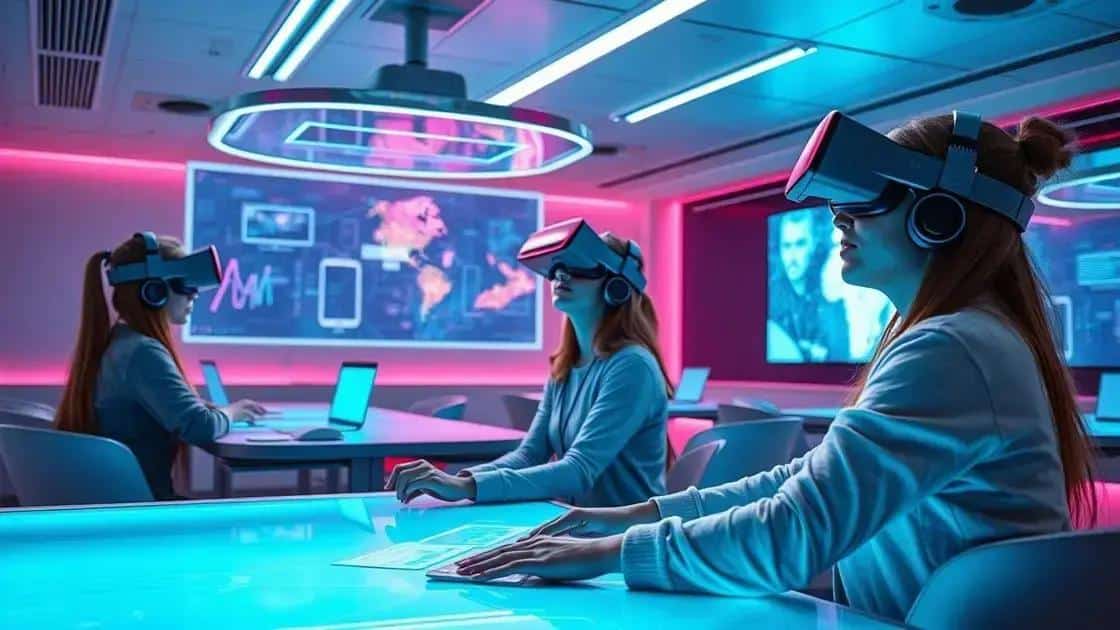
Looking ahead, the future predictions for school technology integration are both exciting and promising. Educators and innovators are constantly exploring ways to enhance the learning experience through technology.
Increased Use of Artificial Intelligence
One significant trend is the increased use of artificial intelligence in education. AI can provide personalized learning experiences, adapting to each student’s pace and understanding. With AI-driven tools, teachers can receive insights into student performance, allowing for tailored instruction.
- Smart tutoring systems
- Automated grading tools
- Advanced learning analytics
This technology will help address the diverse needs of learners more effectively than ever before.
Virtual and Augmented Reality
Another exciting development is the rise of virtual and augmented reality in classrooms. These technologies offer immersive learning experiences that bring subjects to life. Students can explore historical sites or conduct virtual experiments, making learning more engaging.
- Immersive experiences for science and history
- Virtual field trips and tours
- Enhanced visualization of complex concepts
With VR and AR, education becomes an adventure, sparking curiosity and deeper understanding.
In the future, we can also expect that schools will adopt more collaborative platforms that connect students and educators beyond their classrooms. As remote learning becomes more common, these platforms will facilitate teamwork across geographical barriers, allowing for a richer exchange of ideas.
Moreover, data-driven decision-making will play a crucial role in shaping educational strategies. Schools will increasingly rely on analytics to inform curriculum choices and improve student outcomes, ensuring that their technology integration aligns with educational goals.
The integration of technology in schools will continually evolve, paving the way for innovative teaching methods and learning experiences that prepare students for a fast-changing world.
FAQ – Frequently Asked Questions About Technology Integration in Schools
What are the main benefits of integrating technology in classrooms?
The main benefits include enhanced engagement, improved collaboration, and personalized learning experiences that cater to individual student needs.
What challenges do schools face when implementing technology?
Schools often face budget constraints, lack of training for teachers, and the need for effective technical support during implementation.
How does technology enhance student learning?
Technology provides interactive tools that make learning more engaging and allows for quick access to information, facilitating a deeper understanding of subjects.
What role will artificial intelligence play in future educational practices?
Artificial intelligence will enable personalized learning paths, automate administrative tasks, and provide valuable insights into student performance.

